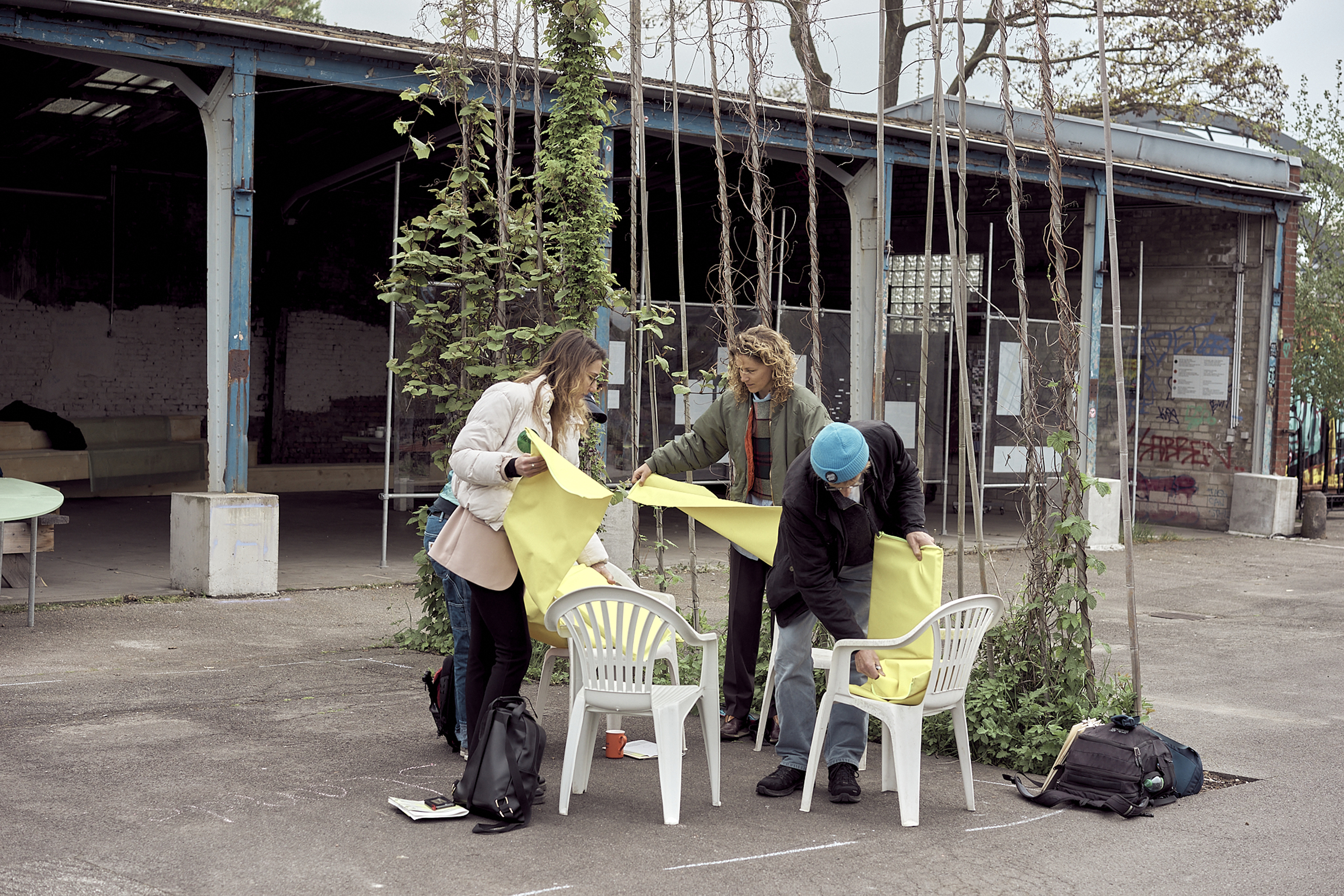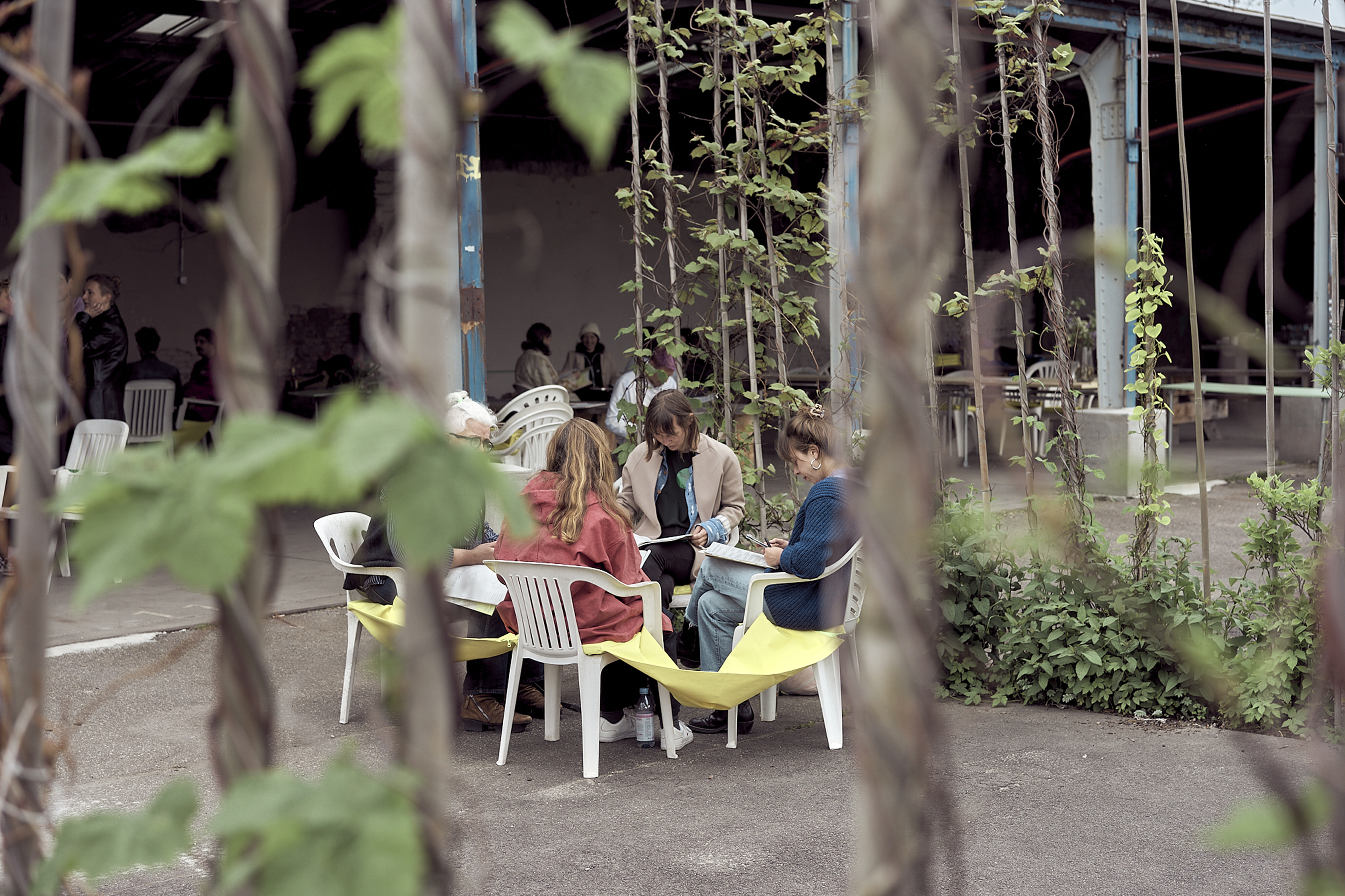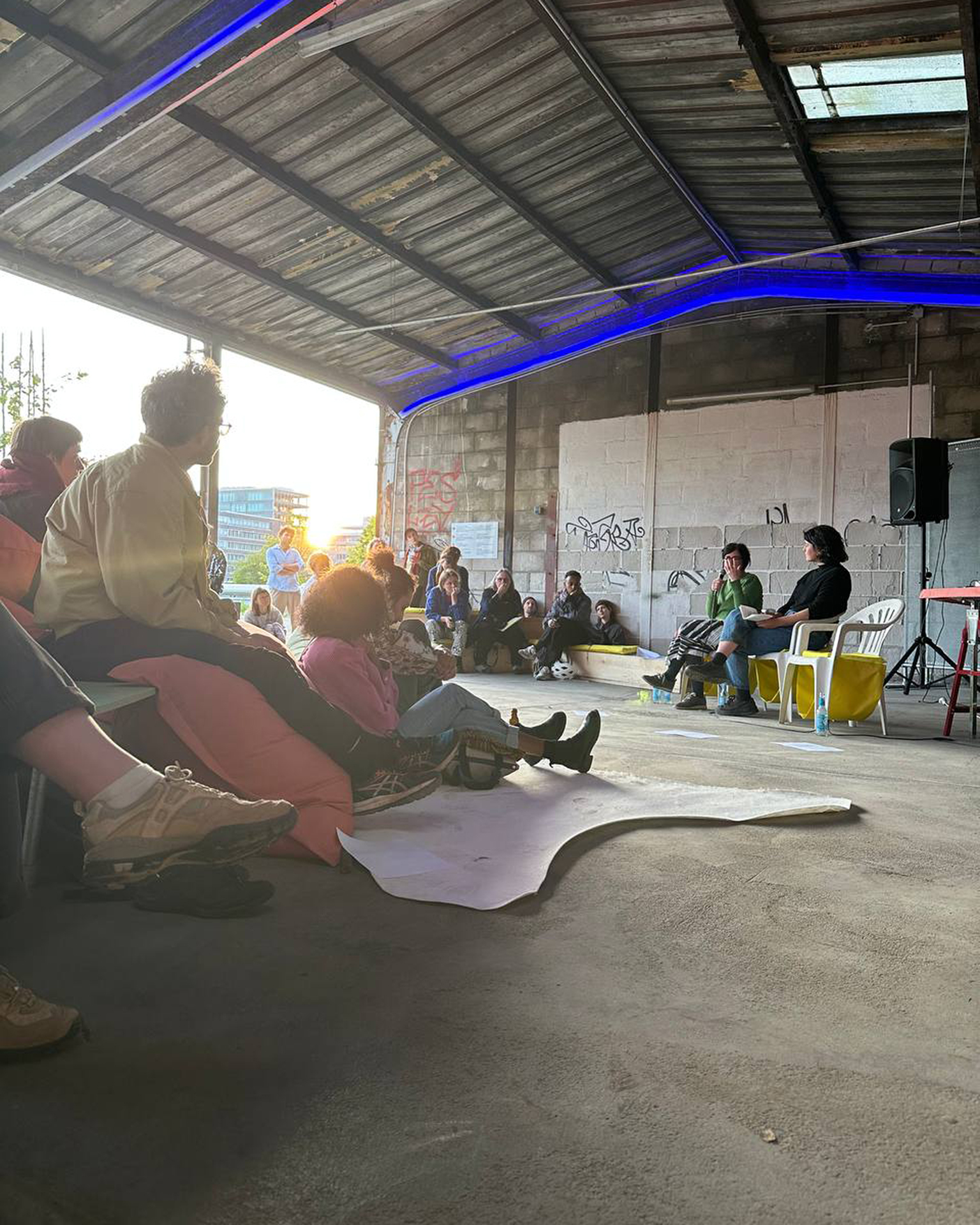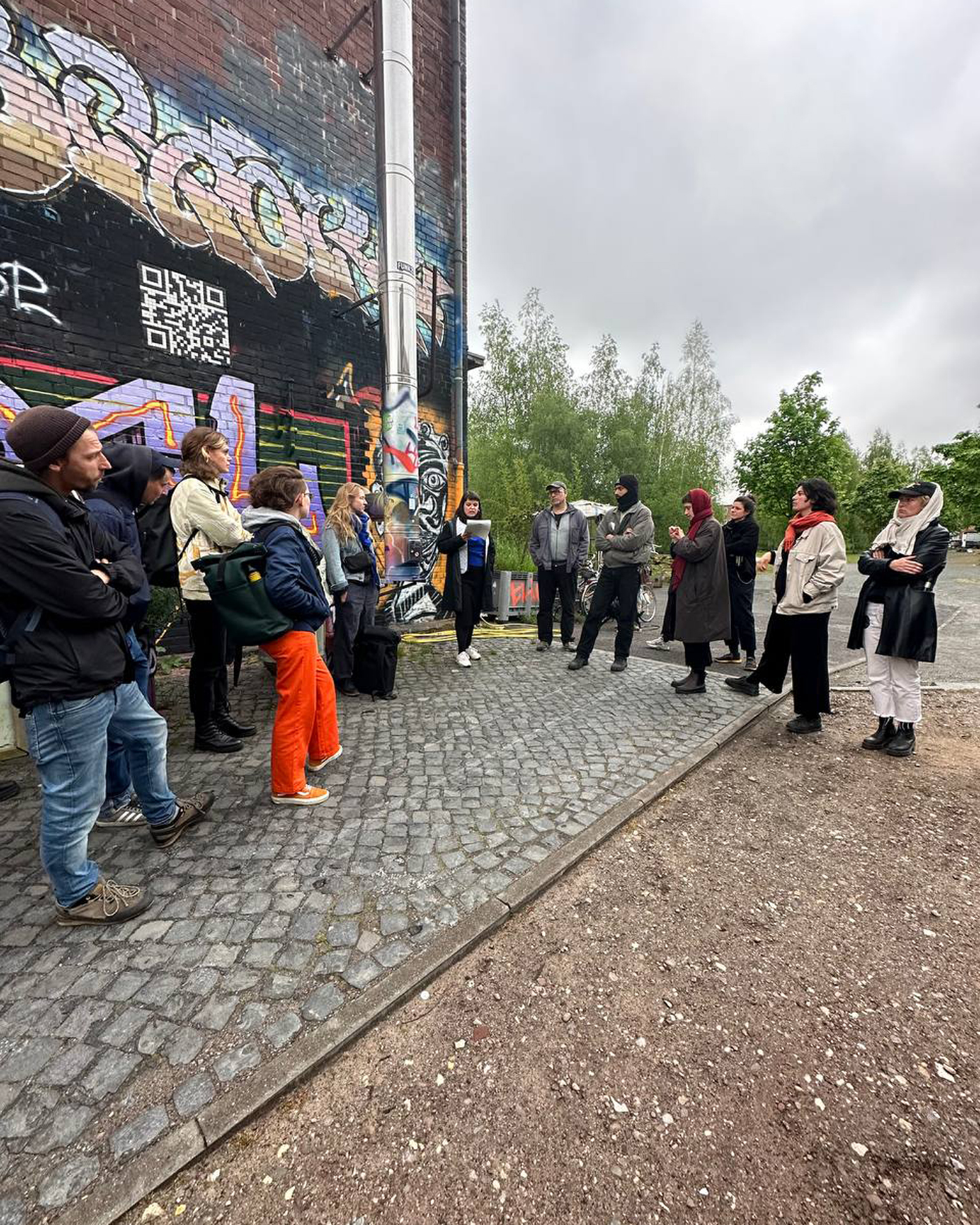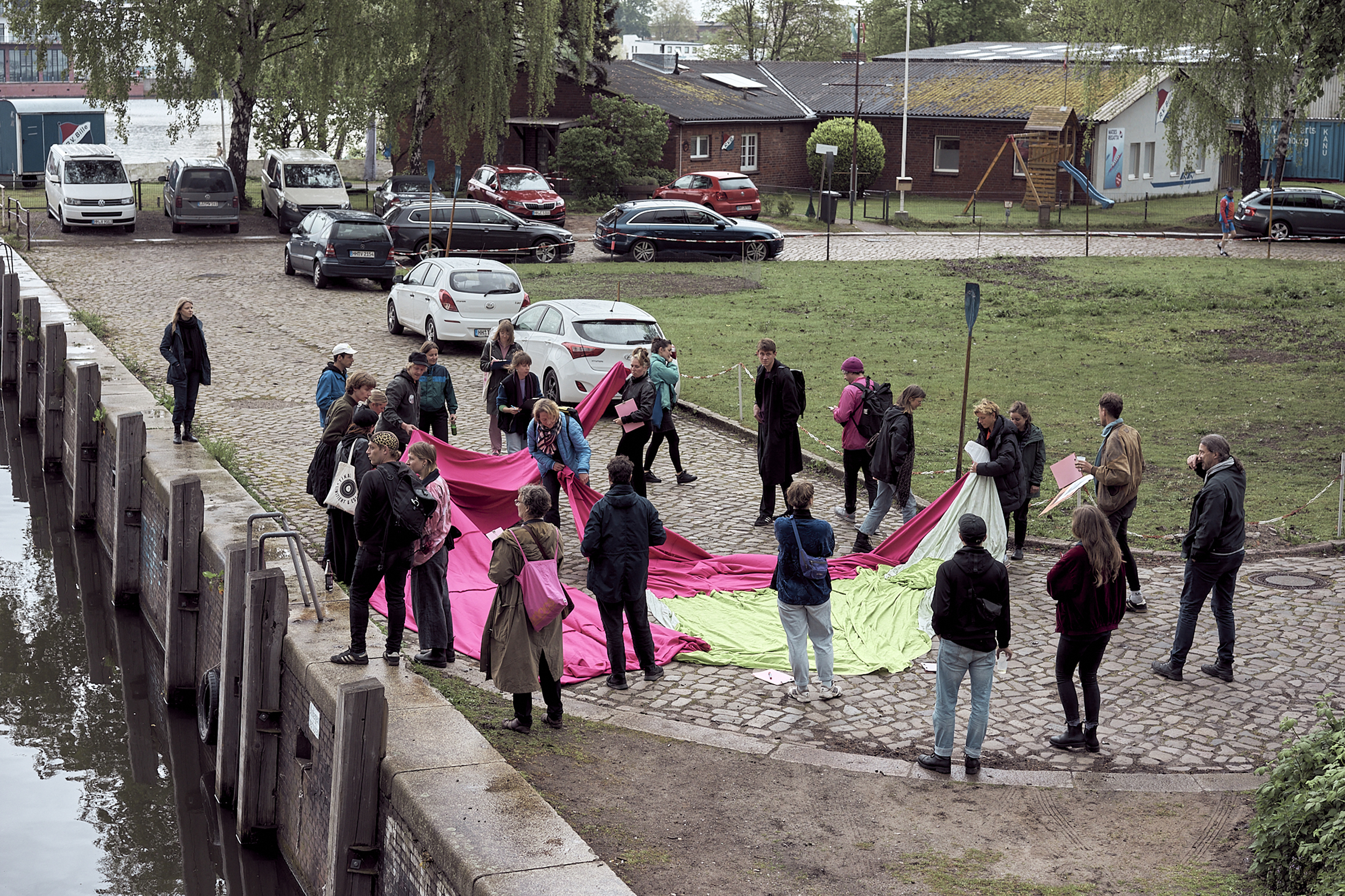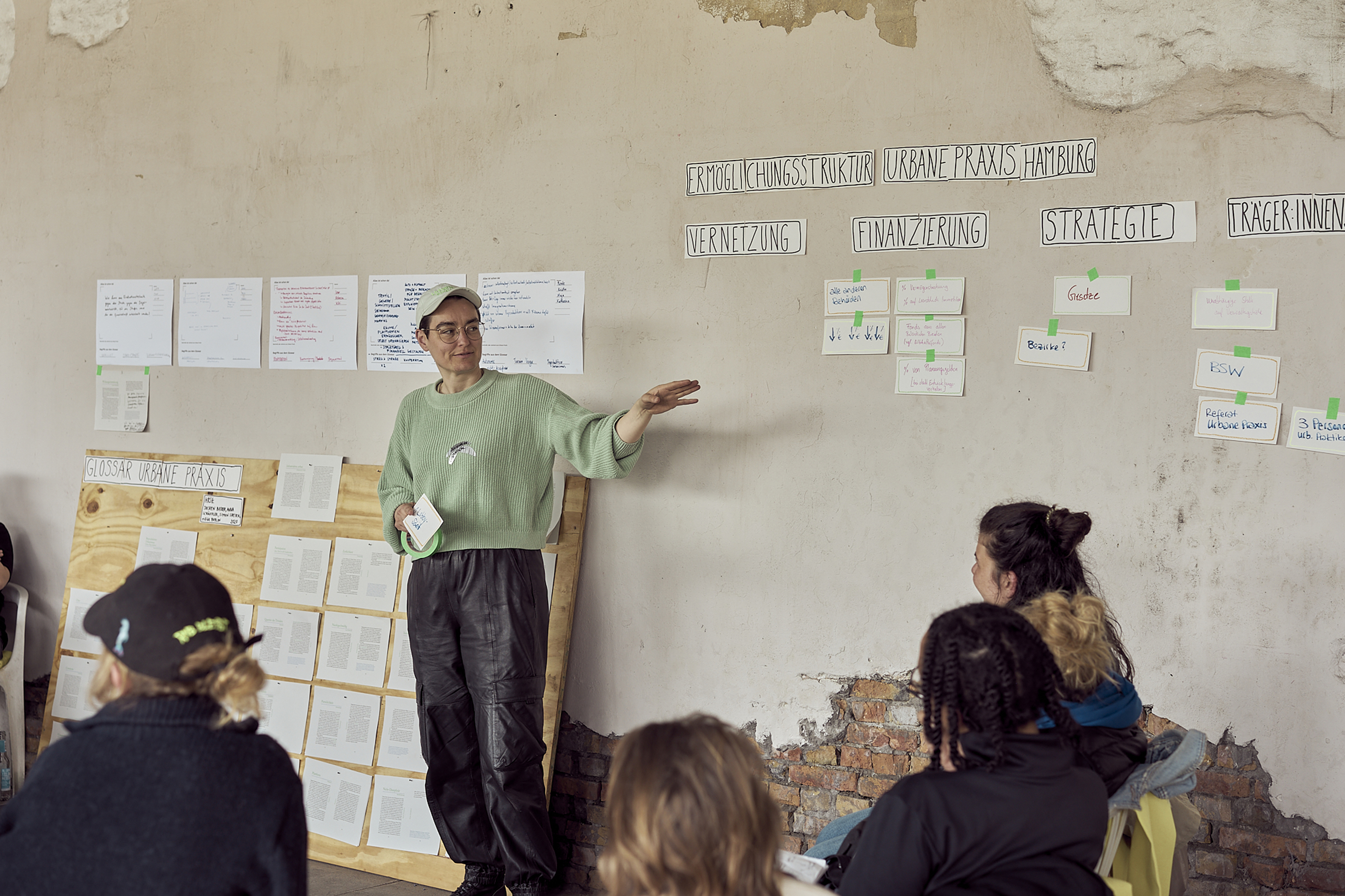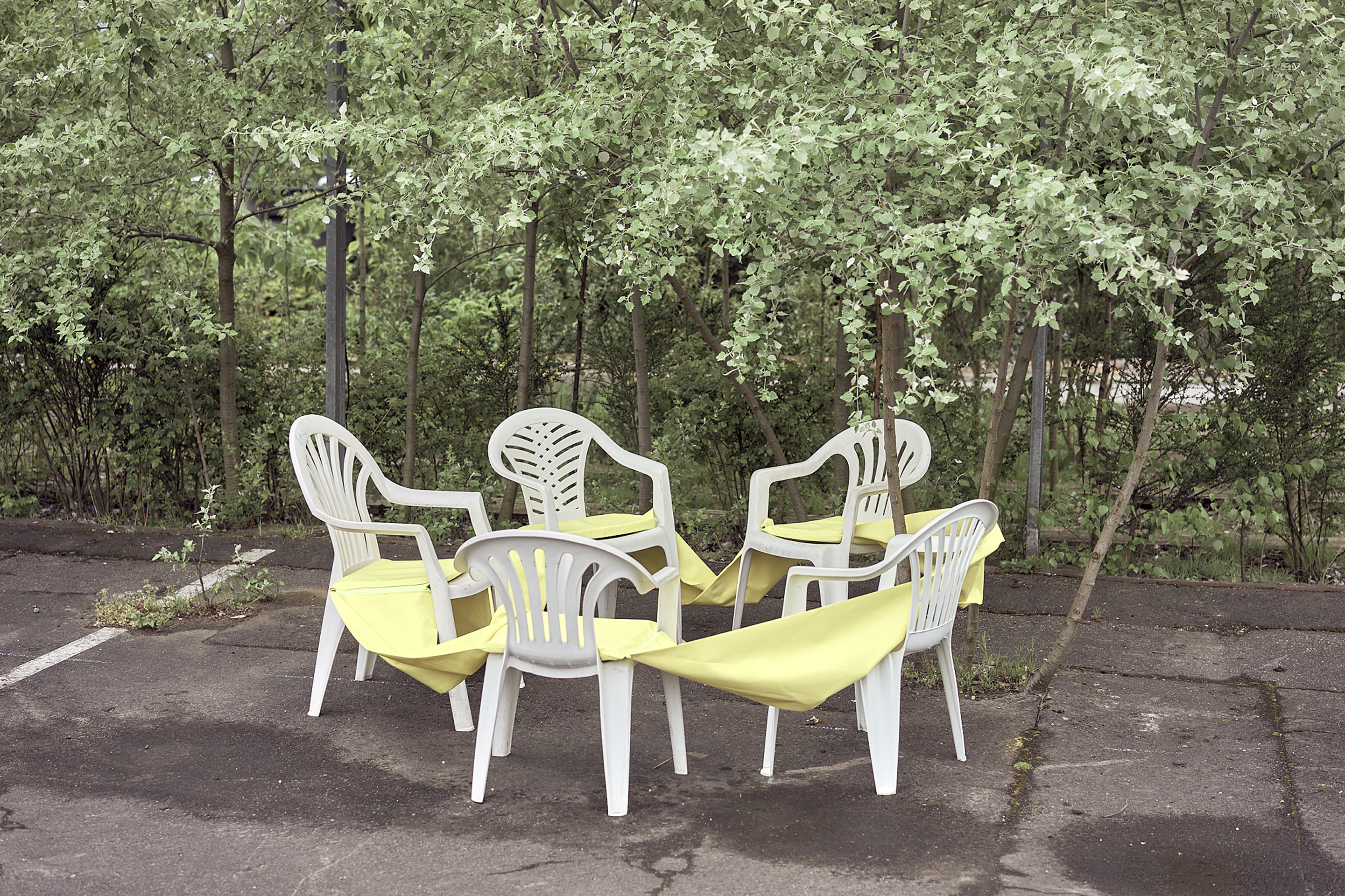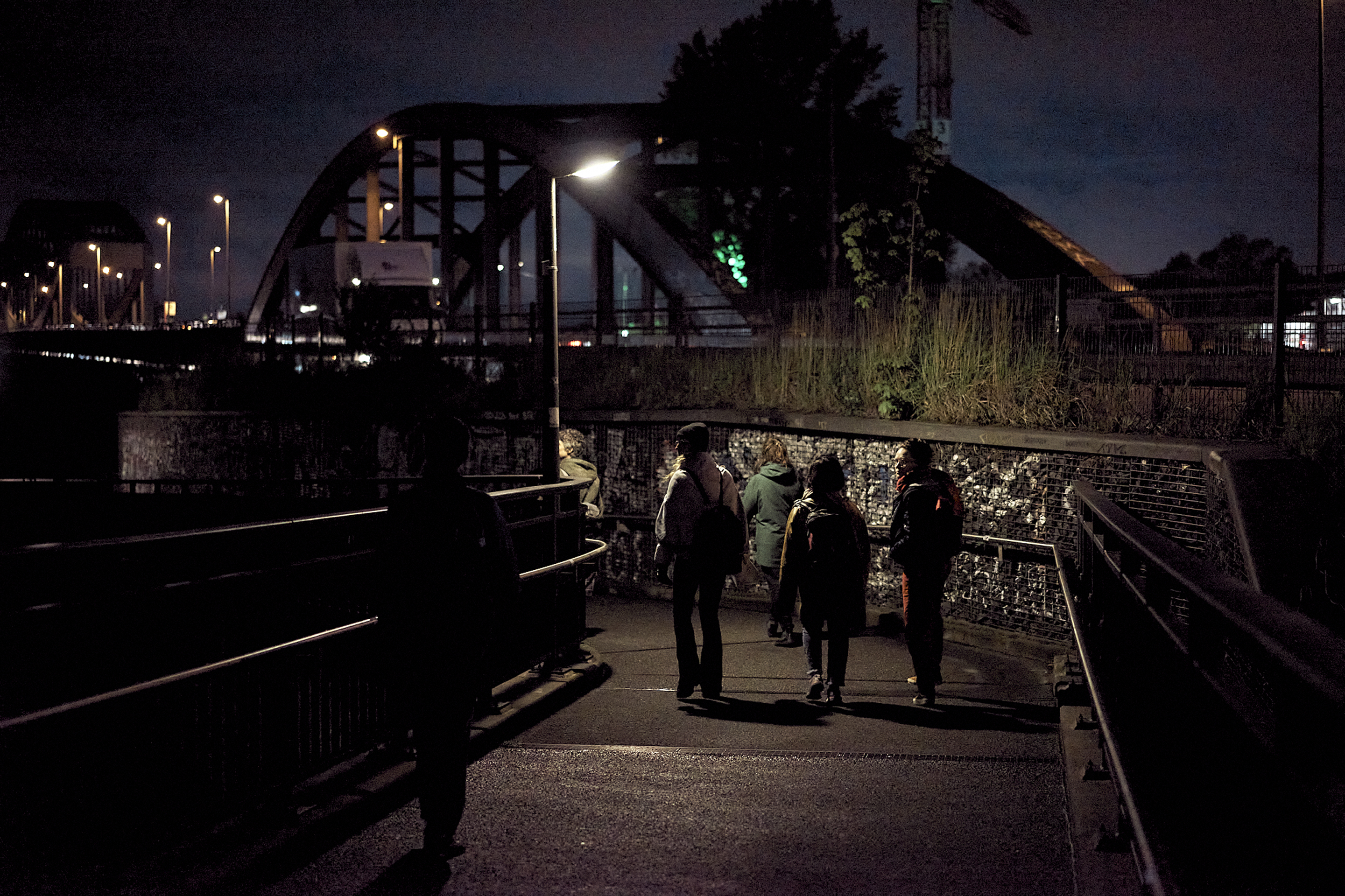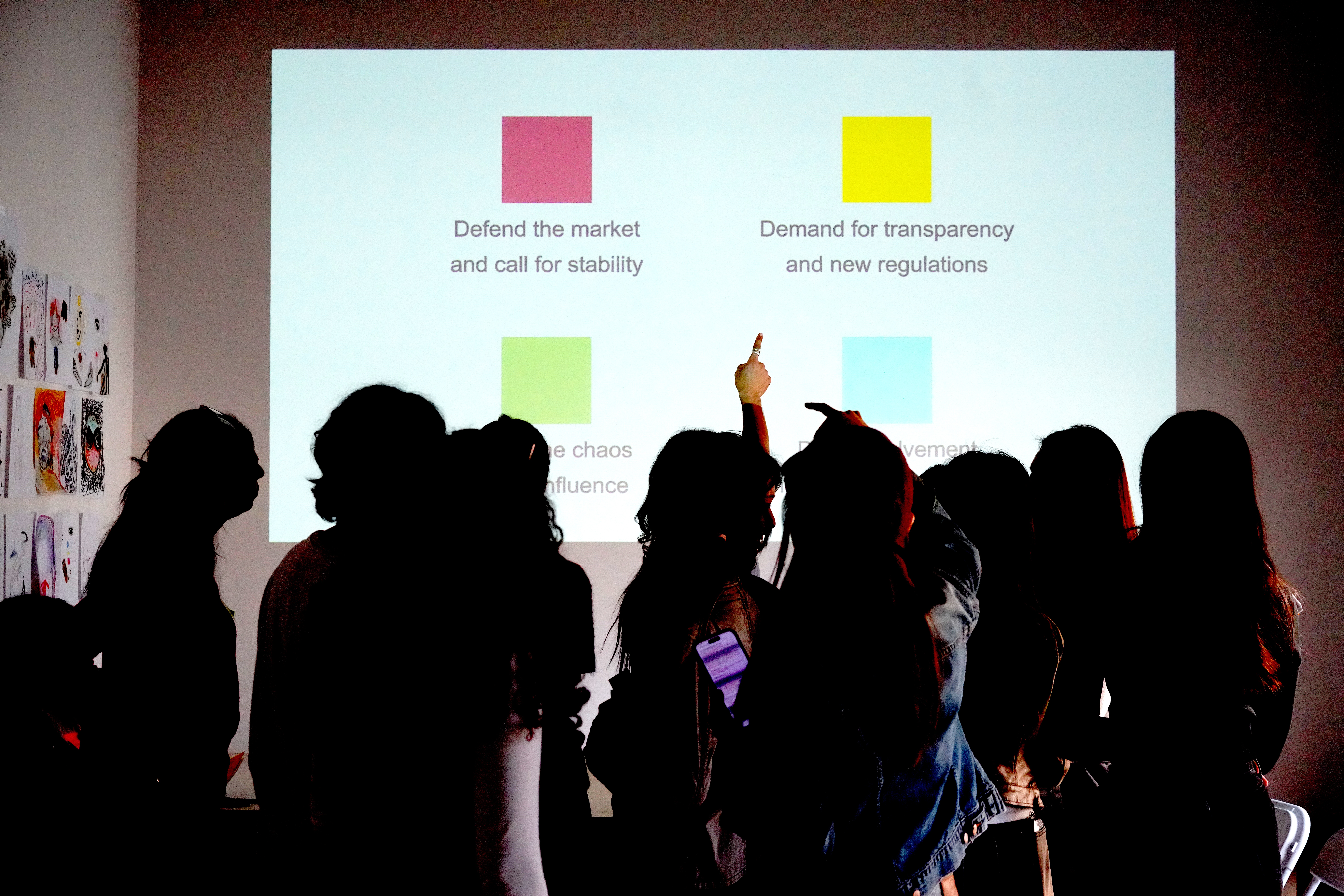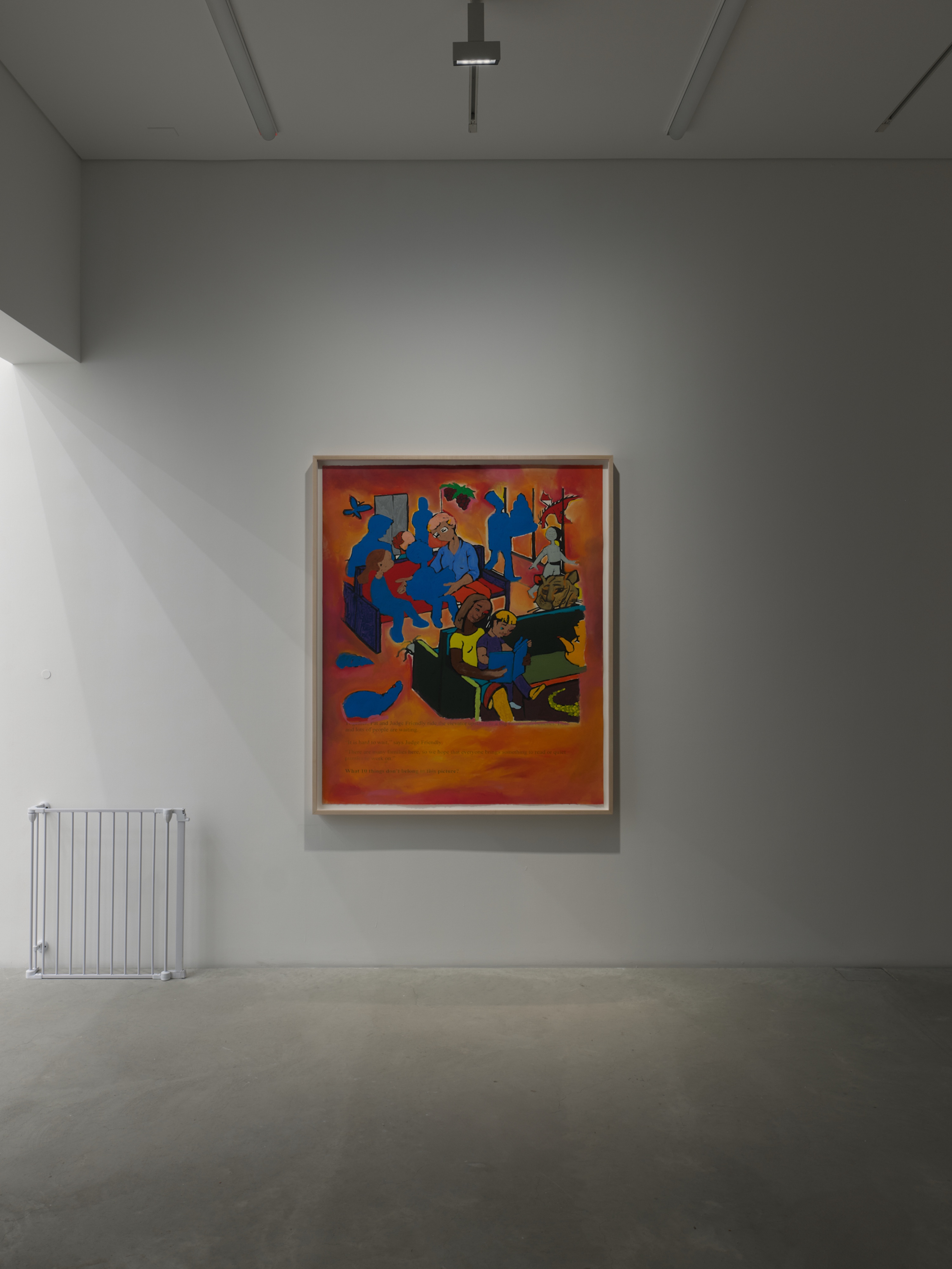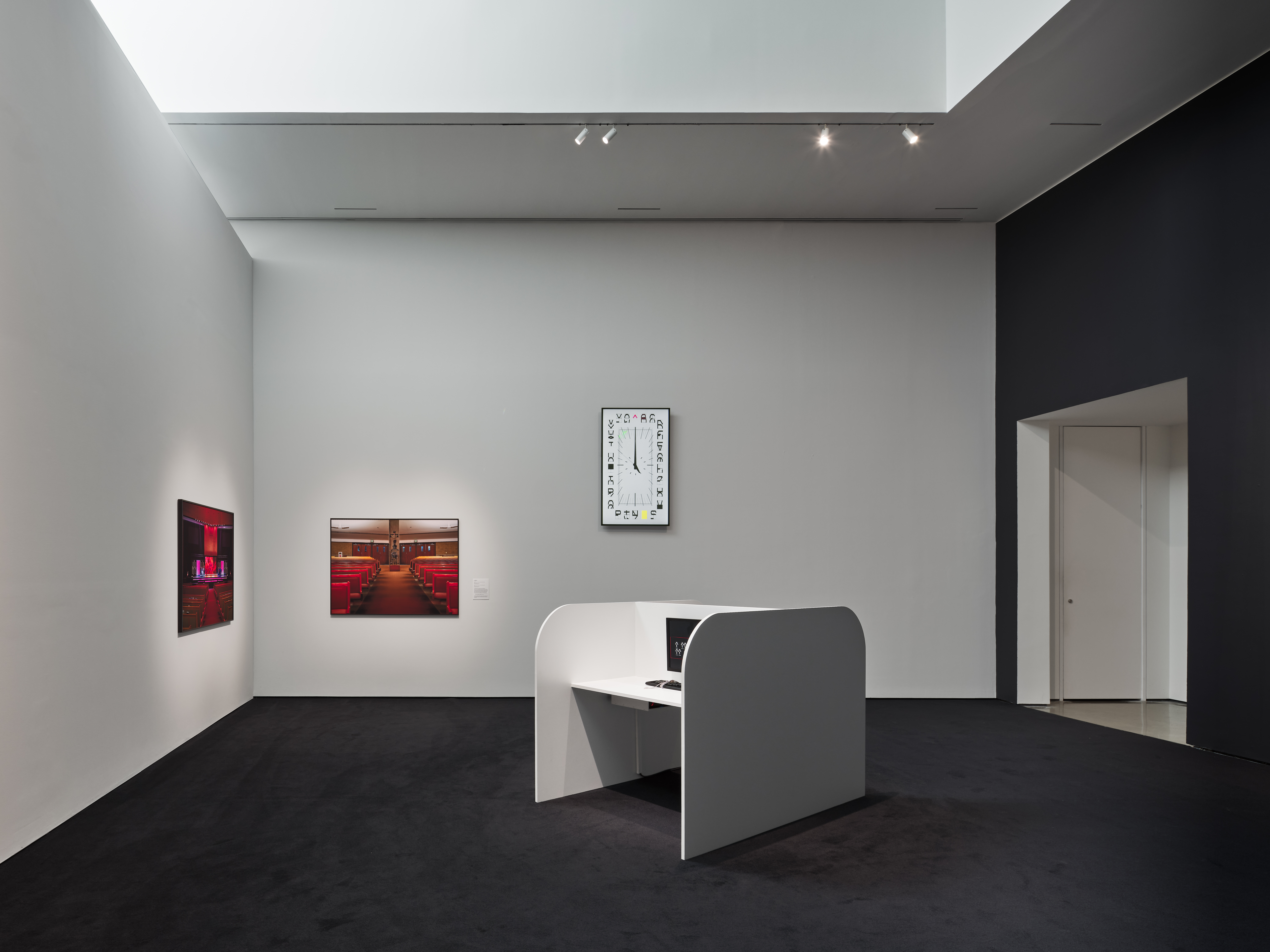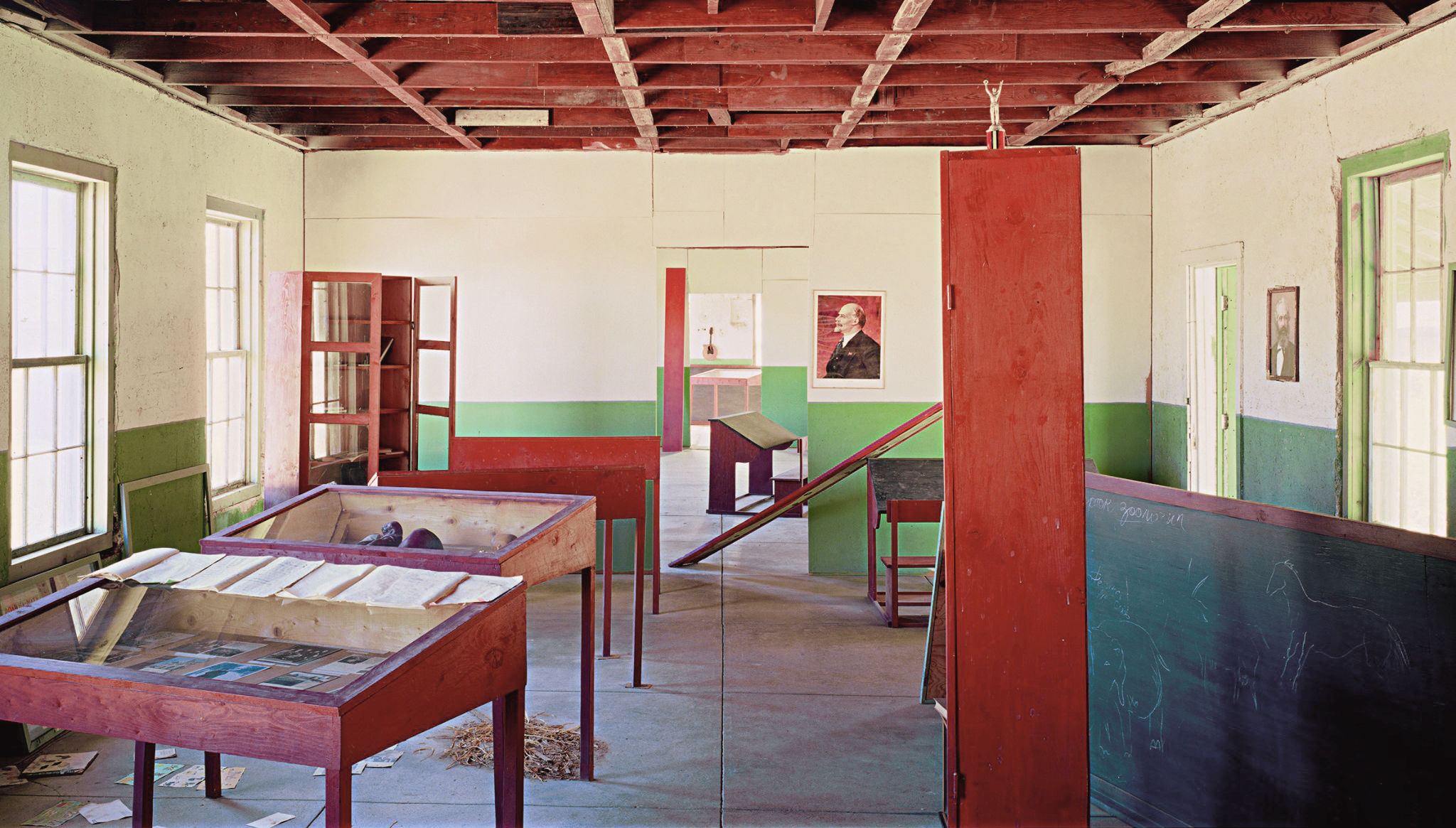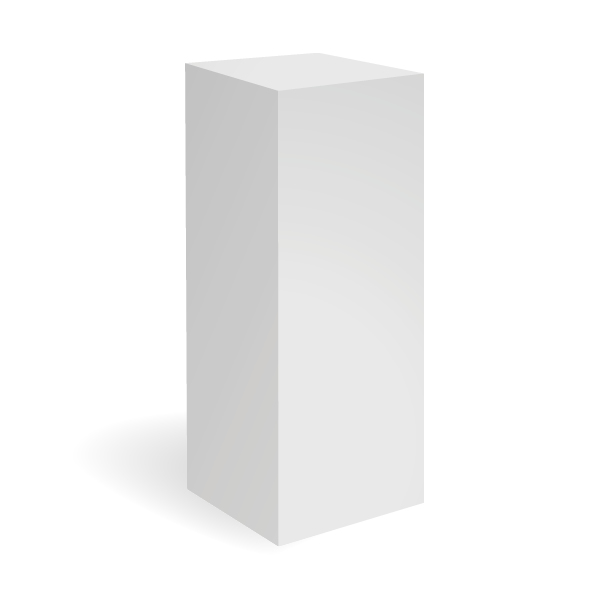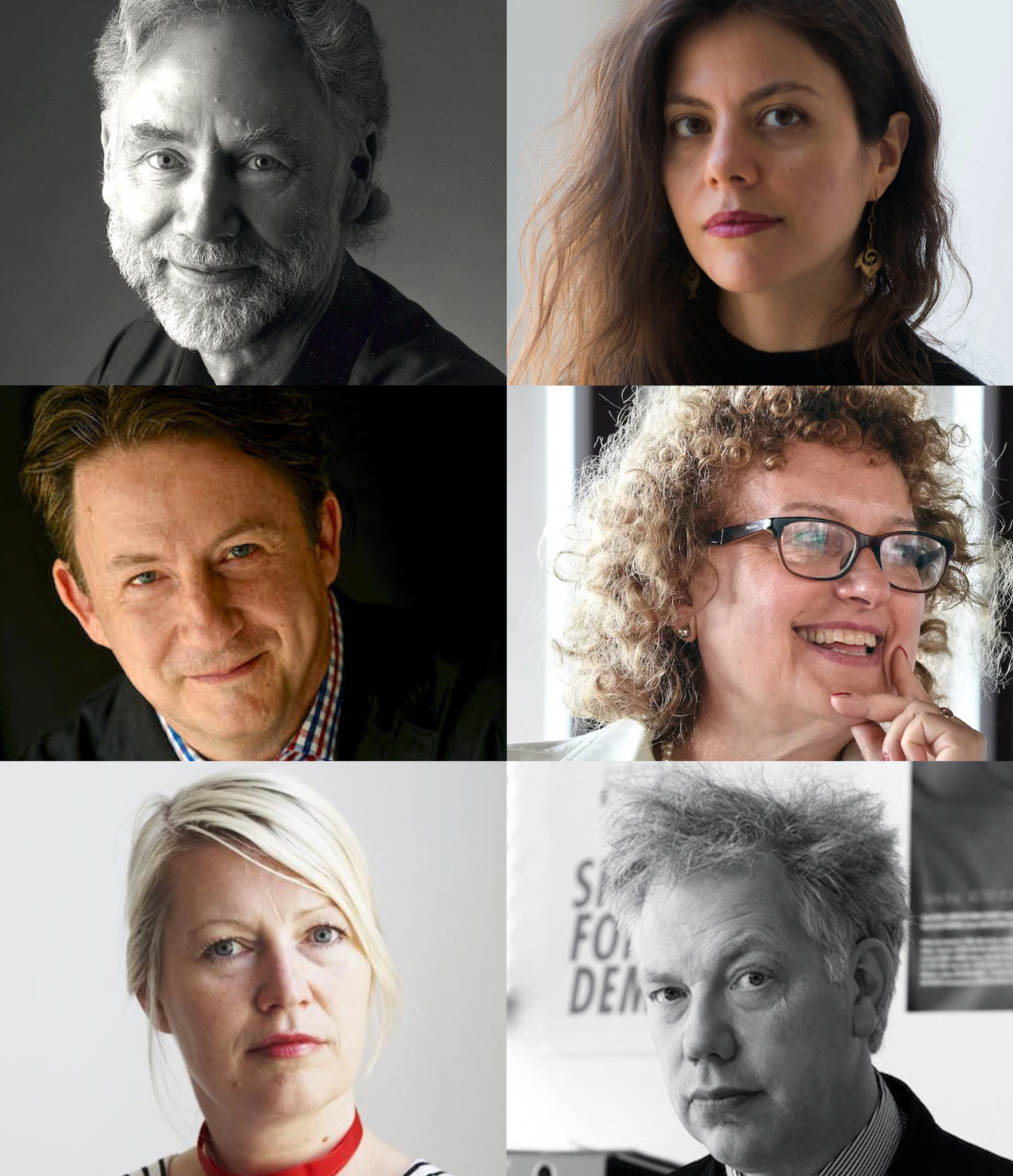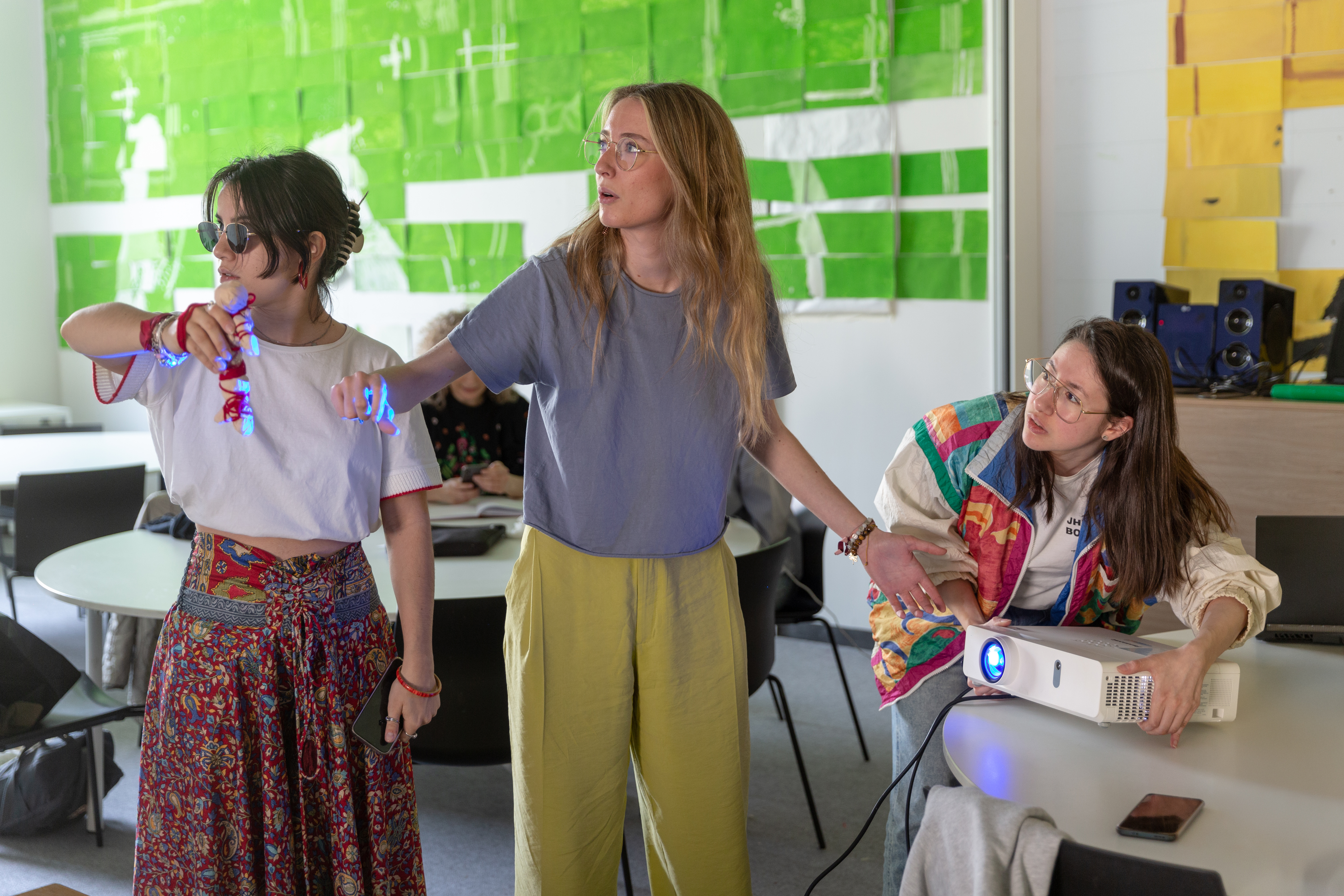The Social Design program at Hochschule für bildende Künste Hamburg (HFBK) Hamburg, since 2011, has been led by feminist practitioners for varying durations. Initially named “Design for the Living World” and later “Free Design,” each iteration of the program has taken context- and process-driven action outside the institution in collaboration with community groups. It is part of a less commercially oriented (though generally moniker-challenged) strand in design education that has accelerated in growth over the past decade, with work falling somewhere among and within art, architecture, and design.
A self-identified “partial” list of values identified by Social Design program leaders includes the responsibility of care, critical spatial practice, relationality, and collectivity. In the 2021–22 academic year, Guest Professor Rosario Talevi situated the discourse, pedagogy, and history of social design within the field’s feminist genealogy; tracing past, present, and future versions of the discipline, and students produced the zine “GENEALOGY of the Social Design Class, HFBK Hamburg, 2006–2022,” documenting how “habits, routines, protocols and methodologies of the current Social Design class echo those of previous ones.” [footnote “GENEALOGY of the Social Design Class, HFBK Hamburg, 2006–2022,” Ronja Soopan, Charlotte Perka, Maria Rincon, Anna Unterstab, Zineb Mahassini, Rosario Talevi, eds., 1.] Within this document they noted that since the departure of Marjetica Potrč, who led “Design for the Living World” from 2011 to 2018 through a professorship, the position has been reorganized by HFBK into a series of precarious one-year guest professorships: “In order to fulfill gender equality, the precarious position is offered to a woman. In 2022, the design department of the HFBK counted four permanent male professors and one temporary, annually renewed female guest professor.” The zine was a response triggered by the empty room in which the class first met, the lack of continuity or institutional memory from years past, and the patriarchal hegemony of our current society. The depressing imbalance and attempt at ameliorating it mirrors architecture lecturer Doina Petrescu’s observation from her decades-long career that it is women for the most part who “[generate] agency within the community . . . perhaps because curating the reinvention of urban commons is also part of the work of reproduction, in which the feminine subjectivity has a central role to play.” [footnote Doina Petrescu, “What is and who does the curating of reinvented urban commons?,” in “ALLES IST SCHON DA: Performing Urban Curating Now” Welcome Pack, 19.]
The histories and discourses that the class and programming have been engaging under current Social Design guest professor Gilly Karjevsky’s direction include strands in language (keywords, autotheory), theory as liberatory practice (thank you bell hooks) commoning (spirituality, imaginaries, and undercommons) and forms of knowing (postcolonial and posthumanist feminisms, sick woman theory). As in other art and design pedagogies in educational environments across the world, there has been at Social Design an emergent interest in the fundamentals, in unlearning, and in challenging disciplinary boundaries. But how might these ideas apply to common urban spaces and institutional pedagogical practice itself?
Initiated by Karjevsky, in collaboration with Jennifer Aksu, the Hamburg-based organization PARKS, and Social Design students, the May 2023 gathering “ALLES IST SCHON DA” (“Everything Is at Hand”), like the earlier zine, was a step toward contextualizing social design. This effort was not exerted through the temporal conduit of the HFBK course itself but with a networked contemporary ecosystem of practitioners. Reaching out, back, and around to people engaged in social design-related work, the three-day gathering framed social design through Karjevsky’s research in urban curating. PARKS, the site and relational context where the event took place, is a former recycling yard that has been developed over the past four years through occupation and iteration by a collage of different collectives and caretakers. I first encountered PARKS via its sister company Hallo E.v a couple years prior while on a research trip of projects practicing transformative systems in different localities, and its members are generous and committed to developing ambitious, cooperatively managed civic spaces. PARKS’s work then provided a perfect touchstone and platform for Social Design’s institutional agenda to situate itself within, that is, to work with what’s already there by working with those who are working with what’s already there.
“ALLES IST SCHON DA,” subtitled “Performing Urban Curating Now,” departed from the conference format and was reoriented toward something more intimate and open. Instead of a position paper, the organizers asked for “question papers’’ in response to the provocation of urban curating written from the context of each of our own experiences within practice. The definition of urban curating offered was loose, but organizers suggested areas of focus that would produce a wide-ranging networked discussion across the whole event. Question papers were composed into conversational structures based on the “hologram” process, “a viral distribution system for non-expert healthcare” that is “based on the experimental care models developed in the Social Solidarity Clinic in Thessaloniki during the height of the financial and migration crises.” [footnote “ALLES IST SCHON DA: Performing Urban Curating Now” Welcome Pack, 51.] By translating this method of mutual trust and supportive questioning, the organizers aimed, on the first day of “ALLES IST SCHON DA,” to create a support network for each other’s practices. Whereas in its original healthcare context, “three non-expert participants create a three-dimensional ‘hologram’ of a fourth participant’s physical, psychological and social health, and each becomes, the focus of three other people’s care in an expanding network,” the new protocol adapted for Hamburg mapped a professional peer-to-peer practice along structural/physical, cultural/social, and strategic/emotional dimensions. [footnote See →.] Each hologram contained the presentation of one question paper and three respondents exploring the question along different dimensional lines. The process yielded varied and energetic exchanges that at times struggled to correlate social problems with urban curation or to help participants move beyond their usual positions. In general, conversations were concerned with ethics and justice. Jane Rendell’s question paper “Is describing already an act of transforming?” spurred a hologram to explore the balance of describing and transforming. Is transforming inherent in describing? Is transforming already an act of describing? What is at stake in the movement from private subjectivity to wider public expression? Discussion shifted between representation, presentation, and translation. “Description” was coined as free-floating attentiveness, never mutual but an open spectrum of opportunities. Participants engaged description in application (in situ in PARKS) as a function of time and audience. Description, we stipulated, entails having to conform to (or at least to meet) an expectation. Rebecca Wall’s hologram “How do we share uncertainty?” was a call for honesty: to be explicit and humbly meet the reality of trying new things. Its hologram explored the value of obstacle-oriented practices, including shields of resilience (shared interest, empathy, and solidarity) to counter the “problematic rain,” points that were later drawn into one of three beautiful diagrams through artist observation by Felix Egle. Alongside artistic observations of different forms, a number of conversational or annotational techniques were used for drawing out and exchanging our individual and collective thoughts.
The organization of the event was attentive and careful, considerate of our multisensory experience, the ebb and flow of conversation, and participants’ energy for connection. The landscape of background references was evident in a printed reader from the course and an open library of participants’ publications. Modular furniture divided the space and hinted (with giant hands) at what we were there to do: to meet each other openly and reach for what we felt to be at stake in common space. A sensitively sewn connecting cushion linked sets of four white plastic garden chairs already owned by PARKS, facilitating the conversational structure of the holograms. The evening after the holograms included guided walks, one that traced the long shadows of war and forced labor on neighboring sites, another that sought literal and absolute darkness in the wider city for its own poetic sake.
At one point in response to a conversation about the question “Who are we?,” that is, what group had gathered for “ALLES IST SCHON DA,” (a question I encountered in multiple versions over the three days), an attendee noted their surprise about the lack of instructive or practical discussions and their puzzlement over still not knowing who “we” were. A feeling of introspection at times abounded, and I really disliked these moments, perhaps because they’re too familiar and produce a sense of ennui, of inaction. One clue I’ve encountered in a recent training since the gathering that might lead us out of these situations was described to me by members of the young (and first) architectural workers union in the United Kingdom (UVW-SAW): consider what would happen if we moved away from “we” or any detached organizational titles and instead chose “you”—“you” are, “you” need, “you” do. [footnote For more on the UVW-SAW architectural workers union, see →. On “you,” see →.]
Kathrin Wildner gave an expansive reflection at the end of “ALLES IST SCHON DA” thanking the organizers for exciting and intense days, noting the ease with which she could smoke as the gathering had been outside. As an urban anthropologist, she is accustomed to participant observation and suggested urban curating must also negotiate with this paradox: to observe something and to be a part of it. I would say that you are never not a part of it, but perhaps you are also part of a relational structure that reproduces some value elsewhere (as do all things), and that in some cases (for instance, in institutions) this elsewhere also weighs on your presence in the space you are observing. On the question of “we,” Wildner acknowledged the class and racial makeup of those present: “It’s really homogeneous the whole setting, which is okay.” Though for me, this sentiment undermined the idea that “everything was at hand” in that space.
To “ALLES IST SCHON DA” I contributed the question paper “How do we keep in time? (aka aiming for extinction).” Outlining where and how I considered my work related to urban curating, I argued that as it comes into being as a named discipline, the value of urban curating lies in aiming for its own elimination. Can we recognize, question, or even act to counter the contingencies we’re swimming in? As an upper-middle class British person socialized through elitist education and the hegemony of neoliberalism, I found my politics in parallel with, and in no small part from, my experience of working with communities for years as a part of the architectural practice Assemble. [footnote On Assemble, see →.] This exposure to and education in political realities was something I otherwise had had no proximity to. However, in recent years, through the sudden hopeful emergence of a possible left resurgence in the United Kingdom that bubbled up around Corbynism up until 2019 and its subsequent intentional disassembly by the professionalized political class, I have become more acutely aware of the alienation between those who profess to act on behalf of others and the void of power for those who experience the violence of this society. David Graeber spoke eloquently about the current class divide in the UK having been transformed over the past fifty years into one between the rising managerial-professional (exponentially administrative) class and people who do care work of various forms. [footnote David Graeber, “From Managerial Feudalism to the Revolt of the Caring Classes,” lecture, 36th Chaos Communication Congress, December 27, 2019, →.] It’s a particularly salient distinction in this context where we, the educated professionals, speak of curating, which at its etymological root means “caring for.”
One possible way forward, and the inspiration for my question paper, is to follow in the footsteps of architect and writer Sergio Ferro’s “professional suicide” by demystifying the power dynamics through which we operate:
Where are the intersecting commodity chains stretching out in front of and behind us? Where have they come from and where do they go? How do we trace the deeper political economy reproduced by our work? Can we apply ourselves to see the contingencies of the is, and work with clearer vision on longer-term repercussions? Can we work truly with the is of now? When we gather for conferences like this one what are we reproducing? What does our work strengthen? When we work with resources and pass them among each other where do they go? What do we protect? What timelines are we afforded? What do we seek? [footnote Fran Edgerley, “How do we keep in time (aka aiming for extinction)?,” “ALLES IST SCHON DA: Performing Urban Curating Now” Welcome Pack, 36–37.]
We need a strategically redistributive practice moving toward the extinction of itself in the knowledge that the type of work we do, the contexts we work in, and the priorities that we hold now will dramatically change in the coming decades.
One clear intention for “ALLES IST SHON DA” was the possibility of recognizing “urban curating” as a unifying term for disparate disciplines engaged with urban space, but it seemed there was broad resistance to that aim. Is it helpful to have one name for varied kinds of work? Is it unhelpful to have many? People are often working with the transdisciplinary and unlearning, but where are the origins of “subjects,” “fields,” “disciplines”? Who defines them? How would one track novel discipline production, which perhaps might be a misguided submission to academia’s demand for the new? “Legitimization comes with professionalization, and professionalization comes with education” is one of three hypotheses identified by the conveners Karjevsky and Aksu as being at stake in their question paper, an contention that is perhaps a product of the precarity of the Social Design course and its fragile institutional memory. However, by tying legitimacy to professionalism, the solution (legitimacy) will always and only entail a class departure from the unprofessional and subsequently only undermine the spaces of agency that urban curating imagines. Tracing the rise of the professional-managerial class—which now makes up the largest portion of working population in the UK—Dan Evans notes social mobility has at its core the idea that there’s something to leave, or perhaps in this case to curate. [footnote Dan Evans, A Nation of Shopkeepers: The Unstoppable Rise of the Petit Bourgeoisie (London: Repeater, 2023).] I believe we urgently need to educate for unprofessionalization, with a critical eye liberated from the assumed reproduction of the same old institutions that maintain their stability through the manifestation of debt and enclosure of knowledge. [footnote To follow in the dispossession logic, see James D. Fisher, The Enclosure of Knowledge: Books, Power and Agrarian Capitalism in Britain, 1660–1800 (Cambridge, UK: Cambridge University Press, 2022). I would like to thank Isabel Pojouner and all those involved in Perpetual Stew, (a shadow event to the RGS Annual International Conference) for expanding my conception of the overlaps in knowledge and land-based struggles around this.] We urgently need to move away from the logics of success within our current structures of professionalization, in which humans become mere vessels, or mouthpieces, performing that which is required by the system of capital accumulation. A shining example of this affectation can be seen in any media appearance given by the UK’s current prime minister Rishi Sunak or, more enjoyably, through the NPC elicitations of TikTok, but this molding of humanity can also be observed in all manner of physical and verbal labor.
It is sometimes difficult to see how conditions and tools affect or produce certain types of work: actions that appear autonomous can be couched in a nest of industrial complexes difficult to imagine. Most higher education institutions, within my experience of them in the UK, are in their essence not made for epistemic justice or the empowerment of the learner; their concern for the production of value being tied to the codification of propertarianism over ideas and increasingly business-oriented relations demonstrate as much. So then, how contained are our intellectual products by academic funding and administrative structures? As higher education is increasingly subject to the relations of neoliberalism, how do we protect our work from the creeping assumptions of that logic? David Graeber wrote on the impact the political ecologies of universities on his subject of anthropology:
Many of the internal changes within anthropology as a discipline—particularly the “postmodern turn” of the 1980s—can only be understood in the context of broader changes in the class composition of the societies in which university departments exist, and, in particular, the role of the university in the reproduction of a professional-managerial class that has come to displace any working-class elements in what pass for mainstream “left” political parties. Reflexivity, and what I call “vulgar Foucauldianism,” while dressed up as activism, seem instead to represent above all the consciousness of this class. [footnote David Graeber, “Anthropology and the rise of the professional-managerial class,” Hau: Journal of Ethnographic Theory 4, no. 3 (2014): 73–88.]
It is not difficult to recognize a similar dynamic in my professional field with its many names, reproducing the thing while knowingly reflecting on it.
How do we move away from rhetoric, empty or otherwise? In my experience with Assemble, becoming a token for radicalism allowed the established professional art and architecture industries to promote “radical” practices while barely shifting their operations. Simultaneously, engaging in this kind of tokenism excluded the possibility of other, more deeply political projects being recognized. Are we—the critical spatial practitioners, the social architects, the urban curators—just reinforcing a variant form of neoliberalism? Are we professionalizing or claiming expertise in what is done through mutual aid? We need literacy in understanding the distinction between what work and whose practices find ways to consolidate the status quo and those that work toward to the antihegemonic. We need to see our intellectual debates as activity that has a political position with real implications: What resources are required to maintain dialectics in the way we currently do? Do we understand what they are? Or where they come from? How do we address that?
In her question paper “How to imagine urban curating with care?,” Elke Krasny writes,
How then does urban curating relate to the complexities of “we,” acknowledging that planetary wounding has resulted from splitting planetary beings into different categories of “we” in biopolitical and necropolitical terms? There is still a pervasive lack of understanding what it means to be living with the afterlife of wounding and of the response-ability to the planet’s wounds. [footnote “ALLES IST SCHON DA: Performing Urban Curating Now” Welcome Pack, 10.]
“ALLES IST SCHON DA” offered little fuel for this fire, but it is hard work (and we need to work hard!) to understand the seriousness of the degree to which we must reorient our working lives. It is too easy to disengage. To return to my question paper: We’re beginning to understand ourselves as what Michael Rothberg names the “implicated subject,” receiving histories and participating in contemporary global supply chains. [footnote Michael Rothberg, The Implicated Subject: Beyond Victims and Perpetrators (Redwood City, CA: Stanford University Press, 2019).] But exploitation and forms of extraction also reach into the future, rippling out from our actions and our consent. In escaping these systemic spirals, “urban curators” and all those involved in navigating the reproduction of the built environment have a key role to play. What could be our new approaches in relation to land, in relation to food, in relation to education, material processing, making space for and supporting access to culture? Say we continue the logic from the graphic novel “a global moratorium on new construction” by Charlotte Maltese-Bathes and Zosia Dzierżawska, and architects are replaced by “members of the community fluent in reparative designs”: material nurse, building surgeon, seed librarian, design psychologist, disassembly engineer, cleaner executive officer (CEO). [footnote Zosia Dzierżawska and Charlotte Maltese-Bathes, “a global moratorium on new construction,” Architectural Review, November 18, 2021, →.] We need the breaking down and reapplication of “urban curators” and all those implicated in the reproduction of the built environment to care roles for the world and for commoning space. This reimagining would specifically reorient power dynamics. For people really grapple with the shifts required to counter the rising inequities of our current time, we need more blossoming internationalist, popular education initiatives like School Is a Crime Scene, a youth-led occupation of a library in Stroud, UK, part of the global project of PRALER (Planet Repairs Action Learning Educational Revolution). PRALER is a joint initiative of communities for resistance, organizations and networks “glocally” building an emancipatory educational process, a revolution that would reorient society to truly care for the world. [footnote See →.]
“GENEALOGY of the Social Design Class, HFBK Hamburg, 2006–2022,” Ronja Soopan, Charlotte Perka, Maria Rincon, Anna Unterstab, Zineb Mahassini, Rosario Talevi, eds., 1.
Doina Petrescu, “What is and who does the curating of reinvented urban commons?,” in “ALLES IST SCHON DA: Performing Urban Curating Now” Welcome Pack, 19.
“ALLES IST SCHON DA: Performing Urban Curating Now” Welcome Pack, 51.
See →.
On Assemble, see →.
David Graeber, “From Managerial Feudalism to the Revolt of the Caring Classes,” lecture, 36th Chaos Communication Congress, December 27, 2019, →.
Fran Edgerley, “How do we keep in time (aka aiming for extinction)?,” “ALLES IST SCHON DA: Performing Urban Curating Now” Welcome Pack, 36–37.
Dan Evans, A Nation of Shopkeepers: The Unstoppable Rise of the Petit Bourgeoisie (London: Repeater, 2023).
To follow in the dispossession logic, see James D. Fisher, The Enclosure of Knowledge: Books, Power and Agrarian Capitalism in Britain, 1660–1800 (Cambridge, UK: Cambridge University Press, 2022). I would like to thank Isabel Pojouner and all those involved in Perpetual Stew, (a shadow event to the RGS Annual International Conference) for expanding my conception of the overlaps in knowledge and land-based struggles around this.
David Graeber, “Anthropology and the rise of the professional-managerial class,” Hau: Journal of Ethnographic Theory 4, no. 3 (2014): 73–88.
“ALLES IST SCHON DA: Performing Urban Curating Now” Welcome Pack, 10.
Michael Rothberg, The Implicated Subject: Beyond Victims and Perpetrators (Redwood City, CA: Stanford University Press, 2019).
Zosia Dzierżawska and Charlotte Maltese-Bathes, “a global moratorium on new construction,” Architectural Review, November 18, 2021, →.
See →.



